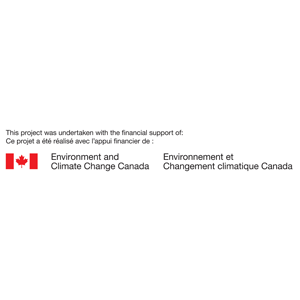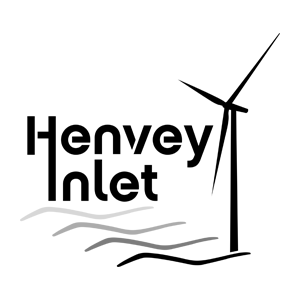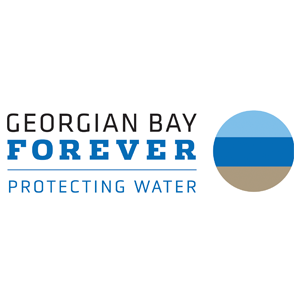
What a weird winter! This is something you have probably heard said a few times over the past few months. Large fluctuations in air temperatures, severe lake effect snow storms, and limited Great Lakes ice cover made headlines this past winter.
In February 2023, the Great Lakes hit a record low for ice cover. Mid-February to early March is typically when the Great Lakes experience their peak ice cover, often covering around 35-40% of the lakes. A cold snap had ice reaching its seasonal maximum on February 4, 2023, with approximately 23% coverage, considerably lower than average for this time of year. By February 13, ice cover was down to only 7%. The lack of ice this past winter season is being explained by milder air temperatures experienced across all five Great Lakes in January. This winter season was 4°C above normal and 6°C above normal for the month of January.
Troubling Trend for the Great Lakes
While there is a great deal of year-to-year variability in Great Lakes ice cover, research from the National Oceanic and Atmospheric Administration (NOAA) has looked beyond the interannual variability and identified an overall downward trend.
Two years ago in our blog post titled On Thin Ice: Trends and Implications for Great Lakes Ice Cover, we reported that on average, ice coverage is 22% lower than it was 50 years ago. Lake Huron ice cover has been on a downward trend with average declines of 2% each year from 1973 to 2010. Projections suggest that as a result of climate change, the Great Lakes will continue to experience more ice-free years, and ice cover may be considered rare by the end of the 21st century (see articles by Filazoola et al., 2020 and Ozersky et al., 2021).

Implications of Reduced Ice Cover
The question now is, what will little to no ice mean for Georgian Bay and the Great Lakes? It is hard to anticipate the consequences of less ice, as we know very little about what happens in the Great Lakes while they are covered in ice. This gap in knowledge is largely due to the difficulty of conducting Great Lakes research under the ice, and until more recently, an assumption from scientists that very little of interest happens under the ice during the winter months.

In On Thin Ice, we identified some of the important properties of ice, such as its ability to reduce wave energy and prevent shoreline erosion during the winter months. Without ice, Great Lakes shorelines will be susceptible to more damage. Ice cover is also critical in protecting spawning habitats for native fish species such as lake whitefish, and reducing the power of waves from winter storms, which may harm spawning shoals and fish eggs. Furthermore, ice cover acts as a light limiter, which is beneficial for native aquatic plants that have adapted to go dormant over the ice cover period due to the lack of light. With less ice cover, more light reaches the bottom of the lake which could create an advantage for invasive species that are not adapted to the same dormancy period as native species. Another symptom of low ice cover, increased light penetration, and thus increased primary productivity, could be a longer season for harmful algal blooms in the summer; however, more research is needed on this topic.
A declining trend in ice cover across the Great Lakes means many of the protective qualities of ice are lost, but there are still more impacts to discover. As scientists begin studying the Great Lakes across all seasons, they are learning that ice-free winters may cause shifts in natural processes such as stratification. With no winter ice cover, the period in which the Great Lakes are stratified – warm water on the top and cold water on the bottom – could be extended. Longer stratification periods could trap colder water on the lake bottom for extended periods of time and cause the deoxygenation of the lake’s deep water. This lack of oxygen in the cooler waters threatens native cold-water species such as lake trout, which often escape to deeper, colder waters.
The consequences of low ice periods on the Great Lakes are still relatively unknown and will likely vary year-to-year and lake-to-lake. However, we can expect to see changes in shorelines and spawning habitats, fish communities, plant growth, algal biomass, stratification, and water clarity.

The Great Lakes are dimictic lakes, meaning they do not remain stratified all year long. Twice a year, in the spring and fall, the waters of the Great Lakes go through a turnover period where the stratified waters begin to mix. This allows for the waters of the lakes to be re-oxygenated and for nutrients that may have been trapped in deeper layers to circulate through the water column. While a lack of ice cover may result in a longer stratification period in some cases, it may also result in a longer mixing or turnover period in other cases. A prolonged turnover period could lead to the warming of deeper waters and excessive circulation of nutrients.
Image credit: National Geographic Society
Beyond the Biological
The lack of ice in the 2022/2023 winter season had impacts beyond those related to biology. The state of the ice this past season impacted communities within the biosphere region that rely on ice for winter recreation such as snowmobiling, fat biking, and ice fishing. Due to warm air temperatures and, consequently, unsafe ice, the 2023 Parry Sound Ice Fishing Derby, held annually in February, was cancelled. The annual Snow Fest continued, but even the ice rink was not open for skating!
Beyond the Biosphere, researchers who study Great Lakes conditions under the ice were unable to conduct field work this year. While most research on the Great Lakes occurs during the ice-free season and takes place on research vessels, winter research is more challenging. Research vessels are not often equipped to operate in icy conditions. On the other hand, vessels that can handle the ice, such as ice breakers, are not typically equipped for research. Some researchers are able to conduct research in nearshore areas by walking on the ice or using snowmobiles, but in seasons like this one, low-ice conditions can prohibit even nearshore research.
Learn more about climate change and impacts in the biosphere region by visiting GBB’s climate change page.
Get Involved!

Interested in citizen science? IceWatch is a program where volunteers can contribute information about freeze-thaw cycles of Canadian lakes and rivers. By reporting ice on and ice off dates, citizen scientists contribute to an understanding of the effects of climate change on Canadian ecosystems. The program is open to anyone by simply registering with NatureWatch. Observations are especially important in areas with little geographic coverage.
Further Reading
- https://agupubs.onlinelibrary.wiley.com/doi/full/10.1029/2021JG006247
- https://agupubs.onlinelibrary.wiley.com/doi/10.1029/2020GL089608
- https://research.noaa.gov/article/ArtMID/587/ArticleID/2941/Low-ice-on-the-Great-Lakes-this-winter
- https://www.theglobeandmail.com/canada/article-great-lakes-ice-coverage-decline/




























